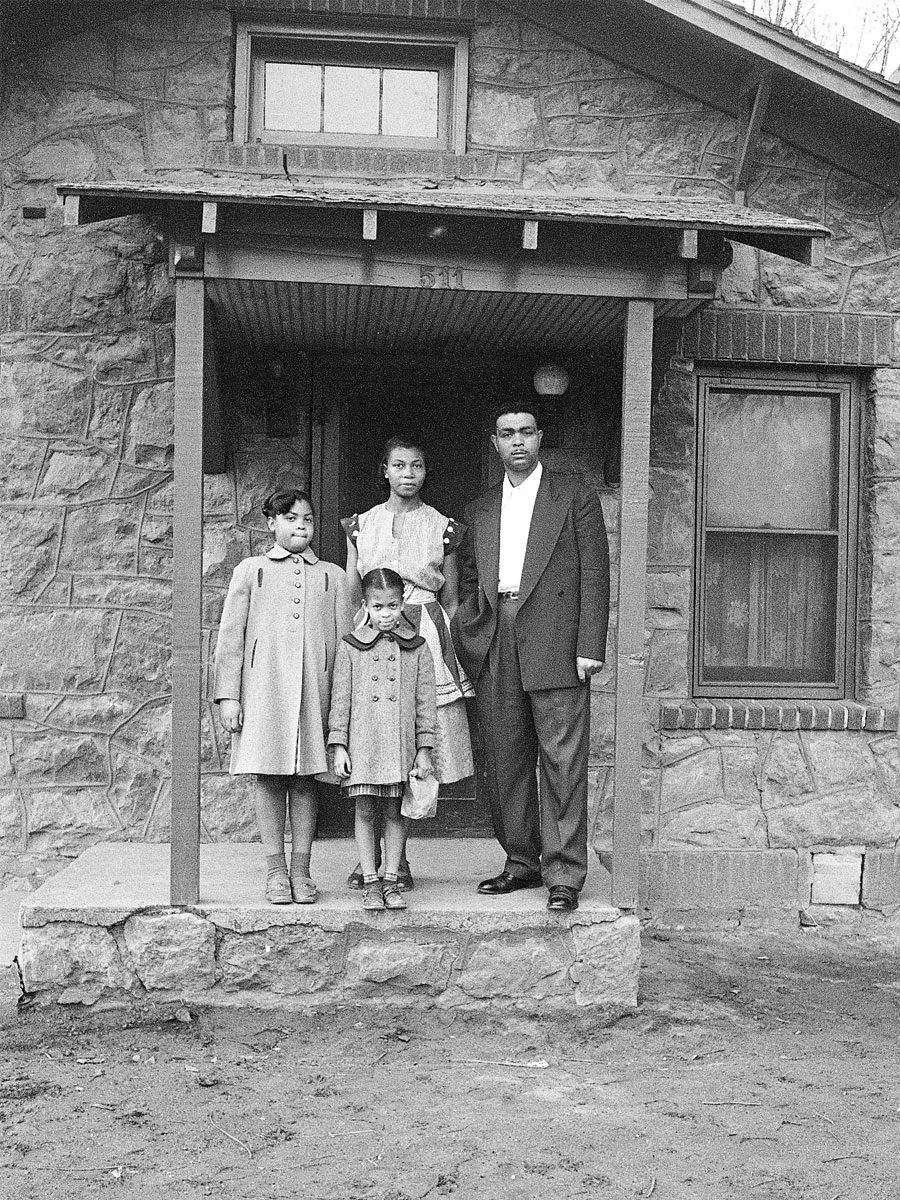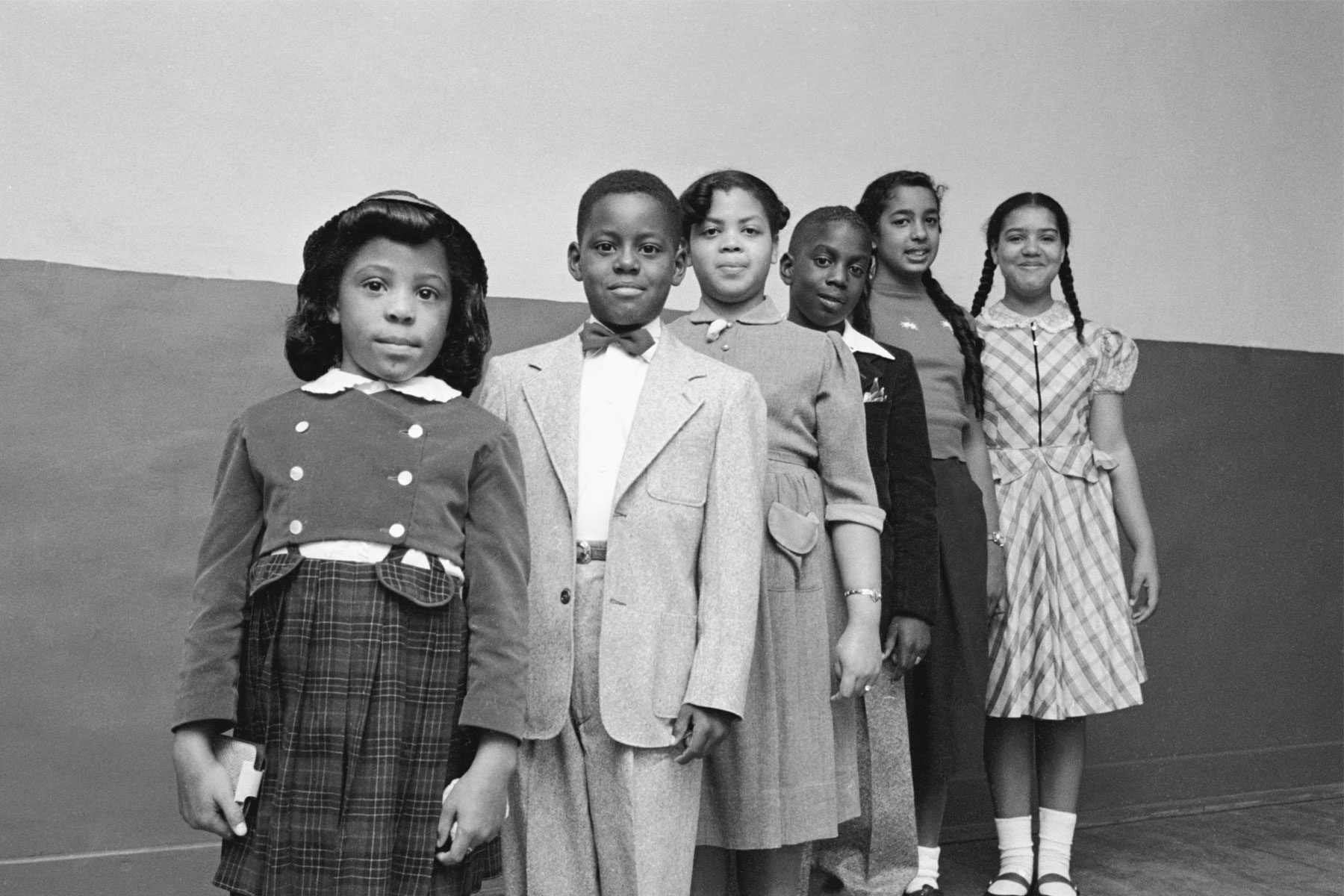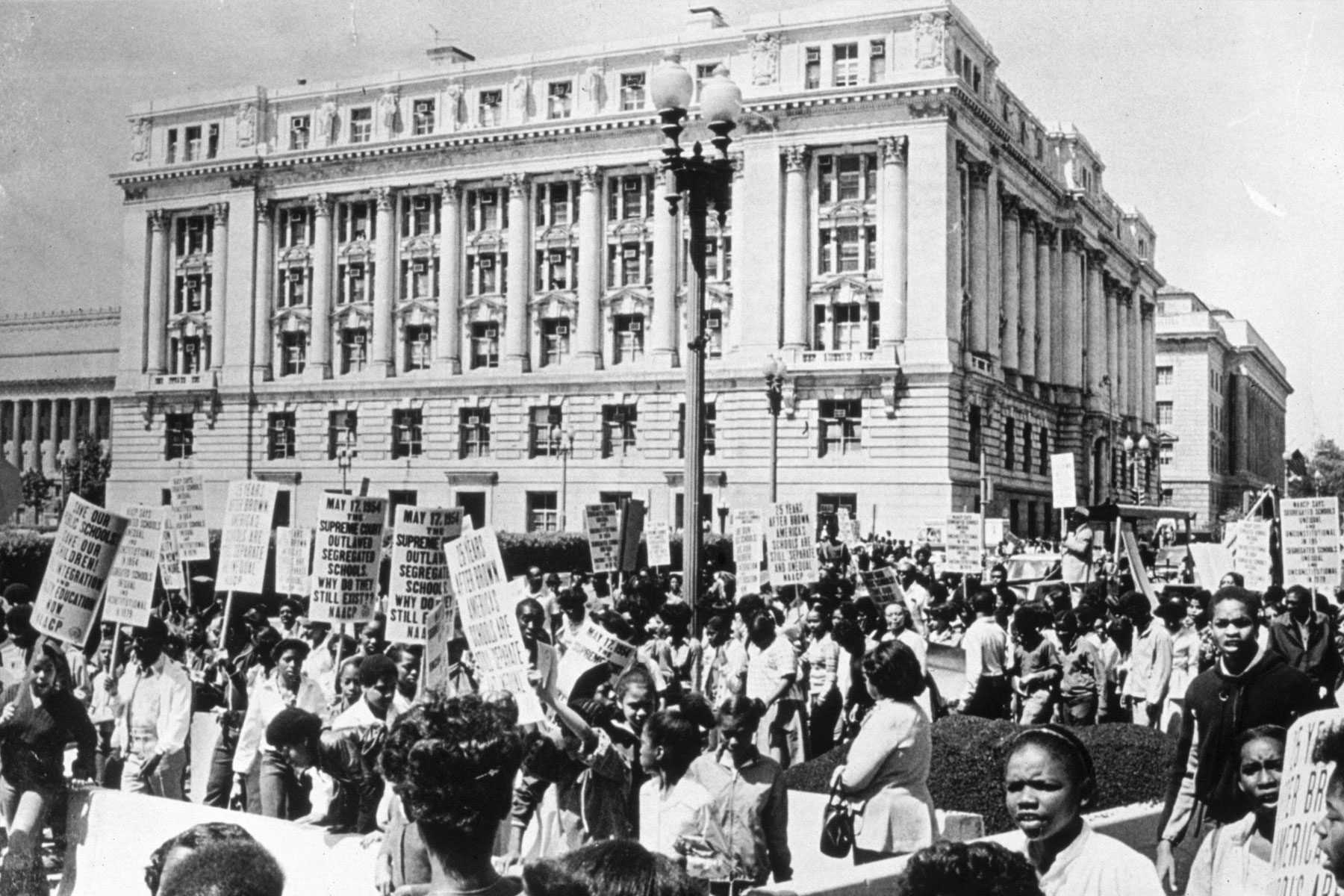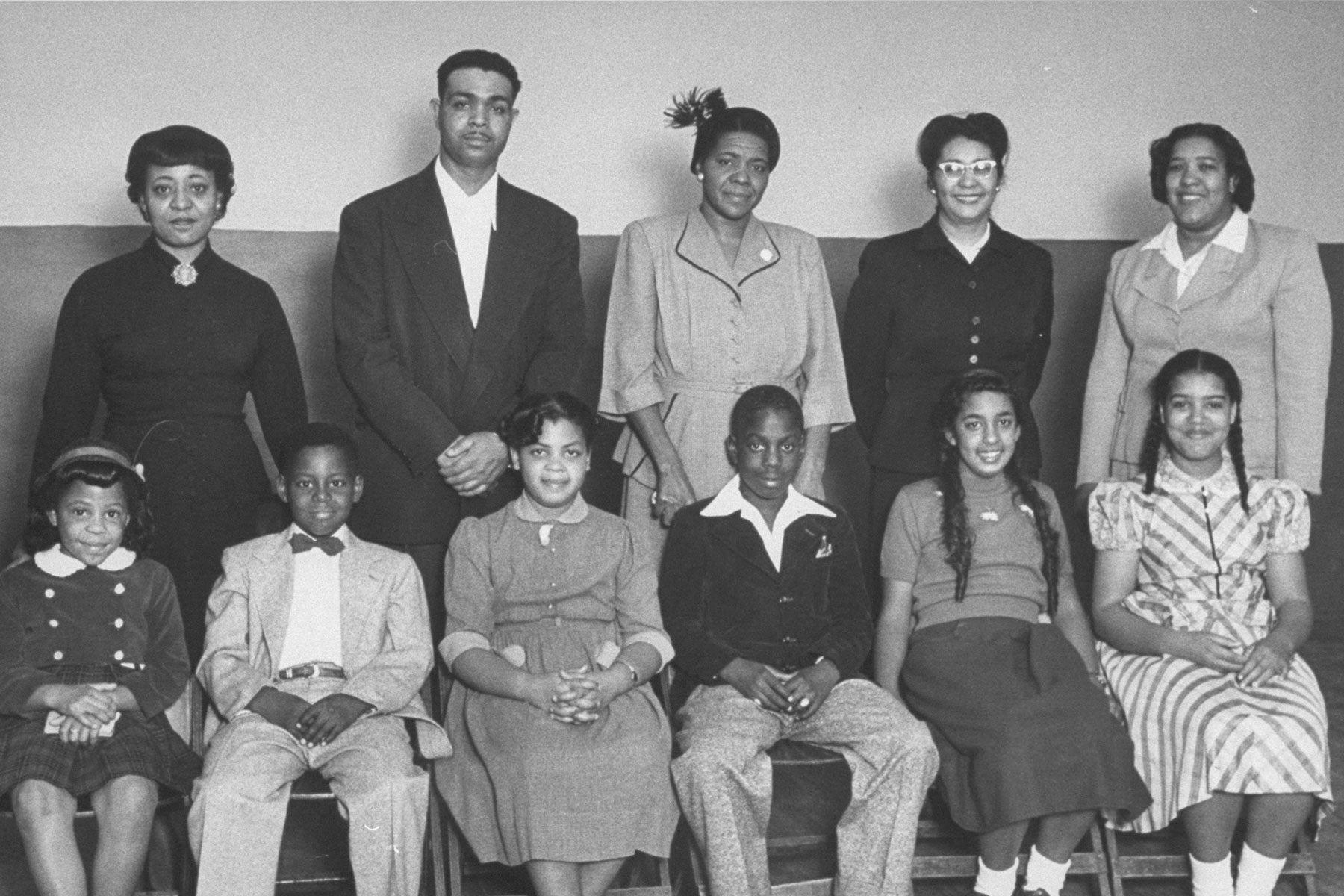Daughter of lead plaintiff in Brown v. Board fears for landmark ruling’s future

[ad_1]
Cheryl Brown Henderson has “lived in the center of Brown v. Board” her entire life: She was three years old in 1954 when the Supreme Court ruled in her father’s favor that segregated schools were unconstitutional. Now, she’s among those fearing for the decision’s future in the wake of Roe v. Wade’s reversal.
After the court overturned Roe in June following nearly 50 years of legal precedent, the public, policy experts and politicians have wondered which notable cases could be next. How safe are the Supreme Court decisions involving marriage equality, contraception access, interracial marriage or segregated schools? In his majority opinion in Dobbs v. Jackson Women’s Health Organization, which reversed Roe, Justice Samuel Alito mentioned Brown and two other cases that enjoy wide support from progressives. He noted that they also reversed years of precedent, but his critics disagree with his framing of these cases. Brown did not ignore precedent, Alito’s detractors say; rather, it found that separate facilities based on race are not, in fact, equal.
For Brown Henderson, Brown v. Board of Education isn’t just political — it is personal. Her father, Oliver Brown, became the lead plaintiff in the class action suit that reversed 1896’s Plessy v. Ferguson in which the high court ruled that “separate but equal” facilities for Black and White people were legal. Before Brown, Kansas was home to 11 school segregation cases between 1881 and 1949, as Black children frequently attended schools in run-down buildings with old textbooks and few to no school supplies. Black students also did not have as many schools to choose from as White students.
To ensure that Black youth received an education on par with their White peers, the Topeka NAACP asked Black community members to try enrolling their children in White schools and document their efforts, paving the way for a class action suit against the school board. In the end, 13 parents became plaintiffs on behalf of their 20 children. Oliver Brown was the only man who took part in the suit, doing so for his eldest daughter, Linda, who had been denied entrance to a White elementary school. (Linda Brown died in 2018.)

Photo by Carl Iwasaki/Getty Images)
In 1951, the NAACP filed the case, which made its way to the Supreme Court after lower courts sided with the Topeka school board. Once it reached the high court, the case joined others from Delaware, South Carolina, Virginia and Washington, D.C., where the NAACP had also filed lawsuits to challenge segregation. The Supreme Court decision now known as Oliver L. Brown et. al. vs. The Board of Education of Topeka, et. al. encompasses all of them.
Gender played an important role in this historic case. Lucinda Todd, Topeka NAACP secretary, helped to develop the idea for the lawsuit. Constance Baker Motley, the first woman attorney for the NAACP Legal Defense Fund, was part of the legal team, and 12 of the original plaintiffs were mothers fighting for their children’s rights. Additionally, Brown is remembered for using the famous “doll test,” research pioneered by a Black woman psychologist, to demonstrate how segregation harmed Black children.
After the Supreme Court ruling, the Brown case continued to affect Black women, inspiring them to take part in the civil rights movement. But it also had unexpected consequences: Many Black teachers lost their jobs after schools were court-ordered to desegregate, and even now, teaching remains overwhelmingly White. Today, 79.3 percent of teachers in the United States are White, while White people are 61.6 percent of the population. Just 7 percent of teachers are Black, despite Black people making up 13.4 percent of the country.
The 19th spoke with Brown Henderson about how gender and Brown intersect and the case’s legacy in a political climate that’s led to the rolling back of reproductive rights, voting rights, and bans against teaching race and social injustice. Brown Henderson is founding president of the Brown Foundation for Educational Equity, Excellence and Research.
This interview has been edited for length and clarity.
Nadra Nittle: Now that the Supreme Court has reversed Roe, many people fear that Brown will be overturned. What do you think?
Cheryl Brown Henderson: Every time there was the confirmation process for a Supreme Court justice, people were asked about super precedents, and Brown v. Board would always come up. What struck me in all of those instances is that there was no willingness to suggest whether Brown was decided rightly or wrongly in their view, and I think that the fact that they were not willing to share their thoughts about that precedent is cause for concern. These days, you absolutely cannot tell because politics seems to be all about extremes, in particular on the right, irrational extremes. I’m glad Congress is taking steps now to codify some of the other issues, like same-sex marriage. So, from where I sit, from the vantage point of my family and having lived in the center of Brown v. Board all my life, yes, there is cause for concern, because we’ve seen that the extremists seem to have the loudest voices.

(Photo by Carl Iwasaki/Getty Images)
How did your family become involved in the lawsuit against the Topeka school board?
The first family to sign on [to the lawsuit] was Lucinda Todd and her husband, Alvin, for their daughter, Nancy, because Lucinda was the secretary for the [local] NAACP. So she was actually one of the strategists sitting at the table. After that, the NAACP held church meetings and canvassed the community trying to see if people were willing to take a public stand by becoming litigants. So, my father, when they came to our home, they had nine people who had already signed on. My dad was the 10th person to sign on as a plaintiff, and at the time, my sister Linda was the only school-aged child in our family. By fall of 1950, they had their full roster of all the parents they were really going to get. Thirteen parents said they would be plaintiffs, and of those 13, my father was the only man. The other plaintiffs were married women, homemakers. My father was studying for the ministry. He was a welder for the Santa Fe Railroad, belonged to the union, as did some of the other husbands, but, for whatever reason, he ended up being the only dad.
Your dad was also the lead plaintiff. How did that happen?
We believe that it was the gender politics of the day, that either the clerk of the court used his name as the lead plaintiff or it was a legal strategy. During that era, men were, in fact, the head of the household and looked to when it came to making family decisions or when it came to who we recognized as community leaders. So we believe it was strictly gender because there was nothing unique and outstanding about him in relation to the other families.
Brown is also linked to the doll test first developed by a Black woman psychologist named Mamie Phipps Clark. Her husband, Kenneth Clark, a fellow psychologist, joined her in this research that revealed Black children preferred White dolls to Black dolls, a sign of how racism had hurt them psychologically. What are your thoughts on the doll test?
When Kenneth and Mamie Clark engaged in their study, it was striking to me. I don’t subscribe to how people interpret that study. I do not believe African-American children saw themselves as being less than or inferior, but I do believe that they were fully aware of the power dynamic that their parents experienced every single day. That power dynamic was that the majority community in their cities held loans for their parents’ agriculture concerns and held the loans on their homes and could in the blink of an eye fire their families. It was the way they were challenged to interact with the White community, that they needed to show some sense of subservience. So I really believe it was not about feeling inferior to anyone; it was more about understanding the power dynamic of their lives and the environment they lived in. So I didn’t necessarily appreciate [Chief Justice] Earl Warren using that concept of inferiority in the part of the opinion that he announced publicly.

(Photo by MPI/Getty Images)
You have a bachelor’s degree in elementary education. How do you feel about Brown’s impact on Black teachers, most of whom were women? Many Black teachers lost their jobs as schools desegregated because White schools did not want to employ them.
Roe v. Wade and what we’re seeing now is a perfect example. In any Supreme Court case, for the people that win, there is cause for celebration, and, for the people that lose, there’s cause for, ‘How do we undo what we feel is judicial overreach?’ And that’s exactly what the White community set out to do immediately after Brown. One way to make that happen was that 38,000 African-American teachers across the South lost their jobs. In Topeka, African-American teachers without tenure, which you received after teaching for more than three years, were fired.
When I speak around the country, I always start with Reconstruction, because I think we are continuing to reconstruct this country in that every time we get to that point of actually looking like there’s going to be a real, substantive, lasting reconstruction, the majority — especially on the far right — began to push back. And I use what happened after the murder of George Floyd as an example. There was global outcry and all of this public narrative about policing and racism. The minute it really started taking hold, there was pushback under the guise of trying to protect children from critical race theory. With Brown, it was no different.
Brown has been credited with influencing women to fight for civil rights. Do you agree?
Oh, my God, yeah. There’s always a militancy, in my view, among women, when it comes to protecting their families, and by extension, their communities. In three of the five cases [folded into Brown when it reached the Supreme Court], the principal petitioners were women. In Delaware, Ethel Belton and Sarah Bulah were the main litigants. In the Virginia case, Barbara Johns, a young 16-year-old girl, organized that case and wrote to the NAACP. Also, on the frontlines of Brown v. Board was Constance Baker Motley, the sole female attorney on the principal legal team. But, of course, there were women at various other levels involved in Brown.
So, women had been on the frontlines, and it was a natural progression that they would take that militancy that brought them to the table in Brown v. Board and translate that into becoming the foot soldiers of the civil rights movement. You think about people like Fannie Lou Hamer, Ella Baker, Diane Nash, Unita Blackwell, Dorothy Height and many others.
Men have, again, much like my father, often been elevated to the roles of sole leadership, when, in fact, right behind them were thousands of women that were doing the difficult work. You look at the Montgomery Improvement Association during the Montgomery Bus Boycott when Rosa Parks took her stance on the bus [in 1955, the year after the Brown decision]. Rosa Parks was a trained activist. When you look at that boycott, it is the longest sustained protest in the history of this country, [381] days, more than a year. And the majority of the people that were boycotting were domestic workers, women that were walking and carpooling and doing everything in their power not to give their money to that public bus system.

. (Photo by Carl Iwasaki/Getty Images)
When scholars discuss Brown’s legacy, they often note that schools today remain largely segregated. How do you feel about that?
The thing that Brown did beyond anything else was it opened the door to opportunity and, yes, other areas of society were impacted in a far greater, far more impactful way than our public schools. Again, I attribute that to pushback. In Juan Williams’ book, “Thurgood Marshall: American Revolutionary,” in which Williams did three years of interviews with Justice Marshall, Justice Marshall talked about how Brown was never about sitting next to White children so much as closing the resource gap. The resources were following the White children, so in order to have equal educational opportunity, there needed to be desegregation of schools, so that everyone was receiving the same level, the same quality, etcetera. What that opened the door to was those who did not want to see school desegregation take place. It opened the door to private schools, White flight, all of the things that we saw happen right after Brown v. Board, leaving deserts, if you will, in urban communities, when it came to the opportunity to have diverse educational experiences. So, yes, I still think there’s value in young people interacting, being educated around one another. At the same time, schools that are dominated by children of color should still be world-class institutions.
[ad_2]
Source link

